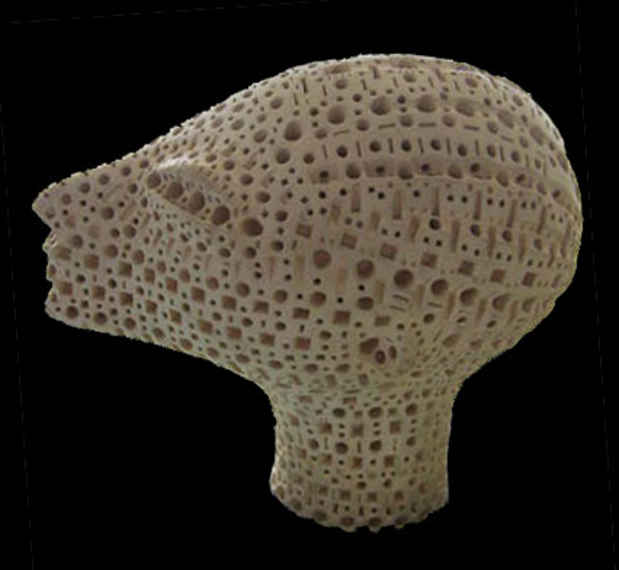"20th Century Figurative Sculpture" Exhibition
Figureworks

This event has ended.
This new season welcomes more progressive changes and new directions for Figureworks. As noted in last season, there is a greater focus on exhibitions that couple 20th century and contemporary artwork. Having acquired a great deal more 20th century works over the summer, this focus will heighten beginning with 20th Century Figurative Sculpture. Pieces from various artists were selected to expose a broad range of style, medium, and individuality.
Chaim Gross (March 17, 1904 - May 5, 1991) was an Austrian born American sculptor. Gross was noted for his direct wood carvings, frequently using South American hardwood for its exquisite grain to highlight various curves and form. In 1922 he began sculpture and drawing classes at the Beaux-Arts Institute of Design with Elie Nadelman and began exhibiting his sculpture in 1935. Brooklyn Museum of Art houses “Ballerina”, a wood carving executed before crowds at the 1940’s World Fair. In the 1950’s, Gross began casting in bronze and produced a lively and looser body of work, which he felt he was not able to achieve though wood. Gross was a professor of sculpture at the Educational Alliance and the New School in New York City. He was a member of Artists Equity, the Federation of Modern Painters and Sculptors, and the National Institute of Arts and Letters. He served as President of the Sculptors Guild of America. His sculptures can be found in numerous museums and private collections.
Milton Hebald (born May 24, 1917, NYC) is a sculptor who specializes in figurative bronze works. Twenty-three of his works are publically displayed in New York City, including the statues of Romeo and Juliet and The Tempest in front of the Delacorte Theatre in Central Park. His major work, created in 1961, is a 220-foot 12-piece Zodiac Screen, then the largest sculpture in the world, commissioned by Pan-American Airlines for its terminal at John F. Kennedy International Airport. He studied, starting at the age of ten, at the Art Students League of New York, the National Academy of Design and the Beaux-Arts Institute of Design and had his first one-man show in NYC at the age of 20. He was awarded the Prix de Rome Fellowship to the American Academy in Rome in 1955, 1956 and 1957. He remained in Italy with his wife, painter, Cecille Rosner Hebald, until returning to the United States in 2004, six years after her death.
Bruno Lucchesi (born 1926 in Lucca, Italy) is a sculptor most known for his contemplative female figures and genre scenes that capture daily life. Lucchesi studied at the Art Institute of Lucca and in 1953 became Assistant Professor at Florence University. In 1958 he moved to New York City and taught at the National Academy of Design and the New School. His works are in the permanent collections of the Metropolitan Museum of Art, Brooklyn Museum, Whitney Museum, Hirshhorn Museum, the Museum of the City of New York, and many others. He has received a Guggenheim Fellowship, as well as gold medals from the National Sculpture Society and the National Academy. Lucchesi has published four books on sculpture.
Alexander Ney (born 1939 in Leningrad, Russia) is known for his unique work in terra cotta sculpture, involving heavily perforated surfaces and intriguing forms. After being given private art lessons at the home of Russian sculptor V.V. Lishev from 1954 to 1957, Ney studied at the Art School of the Leningrad Academy of Arts, and later at the Art School of the Surikov Moscow Art Institute from 1957 to 1959. From 1965 to 1967, he taught sculpture to children at the House of Young Pioneers in Leningrad. Ney immigrated to the United States in 1974, where his intricate and innovative approach to modeling ceramic sculpture continues to gain greater recognition and praise.
Hugo Robus (May 10, 1885 - January 14, 1964) was born in Cleveland, Ohio and studied painting at the Cleveland School of Art (1903-7) and the National Academy of Design, New York (1907-9). In Paris (1912-14) he studied sculpture with Emile-Antoine Bourdelle. In 1918 Robus moved to NYC and focused his career on sculpture. Greatly influenced by the wave of Cubism and Futurism, he developed his distinctive sculptural style of streamlining his figures with gentle curves that enfold and quiet each form. These pieces, cast in silver and bronze, were often highly polished. Robus has an extensive exhibition history and his work is in numerous private and public collections throughout the world.
William Zorach (1887 Eurberg Lithuania – 1966 USA) studied painting at the National Academy of Design in New York City (1907-1910) and then went to Paris. There he saw his first modern art and was particularly attracted to cubism. In 1911 he returned to America and two of his abstract paintings were accepted for the famous 1913 Armory Show in New York. In 1917, Zorach made his first sculpture and soon devoted himself entirely to woodcarving. In 1924 he executed his first piece in stone: a portrait head of his wife. Though Zorach was completely self-taught as a sculptor, he understood and stated that "real sculpture is something monumental, something hewn from solid mass, something with repose, with inner and outer form, with strength and power." Zorach first showed his sculpture in 1924 at the Kraushaar Galleries and numerous one-man shows followed at the Downtown Gallery from 1931 to 1967. In 1950, a retrospective was held at the Art Students League where Zorach taught from 1929 to 1959. The Whitney Museum of American Art mounted a major retrospective of Zorach’s painting and sculpture in 1959, and the Brooklyn Museum organized an important posthumous exhibition in 1968.
Media
Schedule
from September 09, 2011 to November 06, 2011
Opening Reception on 2011-09-09 from 18:00 to 21:00
Artist(s)
Chaim Gross, Milton Hebald, Bruno Lucchessi, Alexander Ney, Hugo Robus, William Zorach et al.